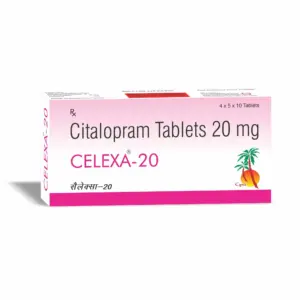In recent years, many people have been turning to GLP-1 medications to help with weight loss and diabetes management. But what exactly is GLP-1, and how does it play a role in managing weight? In this article, we’ll explore the science behind GLP-1, its benefits, and how it can aid in weight management.
GLP-1, or glucagon-like peptide-1, is a hormone produced in the gut. It is a product of the proglucagon gene and is released in response to food intake. This hormone plays a crucial role in regulating appetite and insulin secretion. When you eat, GLP-1 is released into your bloodstream, where it acts on several organs, including the brain and pancreas. It signals your brain to feel full, which helps you eat less. Additionally, GLP-1 aids in stimulating the production of insulin, the hormone that helps control blood sugar levels. This dual action makes it a key player in maintaining energy balance and glucose homeostasis.
GLP-1 works by binding to specific receptors in the body, known as GLP-1 receptors. These receptors are mainly located in the pancreas and brain. Once activated, these receptors trigger a cascade of intracellular events that lead to decreased appetite and enhanced insulin secretion. In the pancreas, GLP-1 promotes insulin release from the beta cells, which is crucial for lowering blood glucose levels. In the brain, it influences areas responsible for hunger and satiety, thereby reducing food intake. This intricate signaling pathway highlights the complex yet efficient mechanism of GLP-1 in regulating physiological processes.
Beyond its role in appetite suppression and insulin stimulation, GLP-1 has several other benefits. It has been shown to promote cardiovascular health by improving endothelial function and reducing inflammation. Additionally, GLP-1 may have neuroprotective effects, offering potential benefits for cognitive health. These multifaceted actions make GLP-1 an attractive target for therapeutic interventions, not only in weight management and diabetes but also in broader health contexts.
One of the primary ways GLP-1 aids in weight management is by suppressing appetite. By slowing gastric emptying and promoting a sense of fullness, GLP-1 can help reduce overall calorie intake. This effect is particularly beneficial for individuals who struggle with overeating or have difficulty controlling portion sizes. Appetite suppression through GLP-1 can lead to significant reductions in daily caloric intake, which is a critical factor in weight loss. Furthermore, this suppression helps in breaking the cycle of habitual overeating, encouraging more mindful eating practices.
In addition to appetite suppression, GLP-1 may enhance metabolic rate. By influencing energy expenditure, GLP-1 helps the body burn calories more efficiently. This effect can contribute to weight loss, especially when combined with a calorie-controlled diet and regular physical activity. Studies suggest that GLP-1 can increase thermogenesis, the process by which the body generates heat and burns calories, further supporting weight reduction efforts.
GLP-1’s impact on appetite and metabolism can also lead to significant behavioral changes. By reducing hunger and cravings, GLP-1 can support healthier eating habits and promote a more balanced diet. People using GLP-1 medications often find it easier to stick to a balanced diet, which is essential for long-term weight management success. Over time, these changes can lead to a shift in eating patterns, fostering a healthier lifestyle that is sustainable beyond the use of medication.
Several GLP-1 receptor agonists are available as medications for weight loss and diabetes treatment. Some of the most commonly prescribed include:
- Liraglutide (Saxenda, Victoza): Originally developed for diabetes management, liraglutide is now approved for weight loss in higher doses under the brand name Saxenda. It has been shown to effectively reduce body weight and improve metabolic parameters.
- Semaglutide (Ozempic, Wegovy): Semaglutide has gained popularity for its significant weight loss effects. Ozempic is primarily for diabetes, while Wegovy is specifically for weight management. It has demonstrated superior efficacy in weight reduction compared to other weight-loss medications.
GLP-1 medications are typically administered via injection. They are usually taken once daily or weekly, depending on the specific medication and your healthcare provider’s recommendation. It’s important to follow the prescribed dosage and schedule to achieve the best results. Proper administration is crucial for maximizing the benefits of GLP-1 therapy, and patients should be trained on injection techniques to ensure safety and efficacy. Regular follow-ups with healthcare providers can help monitor progress and adjust treatment as necessary.
Like any medication, GLP-1 receptor agonists can have side effects. Common side effects include nausea, vomiting, and diarrhea. These symptoms often improve over time as your body adjusts to the medication. However, it’s essential to discuss any concerns with your doctor. Healthcare providers can offer strategies to manage side effects, such as adjusting the dosage or timing of the medication. Staying informed about potential side effects and their management can enhance the overall experience of GLP-1 therapy.
For individuals with type 2 diabetes, GLP-1 plays a vital role in managing blood sugar levels. By enhancing insulin secretion and reducing appetite, GLP-1 helps maintain stable glucose levels, reducing the risk of diabetes-related complications. This hormone’s ability to lower postprandial glucose levels makes it a valuable tool in diabetes management. Consistent blood sugar control is essential for preventing long-term complications such as neuropathy, retinopathy, and nephropathy.
Research has shown that GLP-1 medications can have cardiovascular benefits. Some studies suggest that these medications may reduce the risk of heart disease in people with type 2 diabetes, making them a valuable tool in comprehensive diabetes management. GLP-1’s positive impact on blood pressure, lipid profiles, and inflammatory markers contributes to its cardiovascular protective effects. These benefits extend beyond glucose control, offering additional health advantages for individuals with diabetes.
Beyond the physiological benefits, GLP-1 medications can enhance the quality of life for individuals with type 2 diabetes. By improving blood sugar control and reducing cardiovascular risks, these medications can help patients feel more energetic and reduce diabetes-related stress. The overall improvement in health can lead to increased confidence and motivation to engage in healthy lifestyle choices, further supporting diabetes management efforts.
GLP-1 medications are typically prescribed for individuals with type 2 diabetes or those struggling with obesity. They are especially beneficial for people who have difficulty managing their weight through diet and exercise alone. Candidates for GLP-1 therapy often include those who have not achieved desired results with other weight-loss interventions. Additionally, individuals with a history of cardiovascular disease may benefit from the added heart-protective effects of GLP-1 medications.
If you’re considering GLP-1 therapy, it’s essential to consult with a healthcare provider. They can assess your medical history, current health status, and weight loss goals to determine if GLP-1 medications are suitable for you. A thorough evaluation can help identify potential contraindications and ensure that GLP-1 therapy aligns with your overall health strategy. Open communication with healthcare providers can facilitate a personalized approach to weight management and diabetes treatment.
Regular monitoring and follow-up with healthcare providers are crucial for individuals on GLP-1 therapy. These appointments allow for the assessment of treatment efficacy, side effects, and overall progress. Healthcare providers can make necessary adjustments to the treatment plan, ensuring optimal outcomes. Engaging in regular follow-ups also provides an opportunity to address any concerns and receive ongoing support and guidance in managing weight and diabetes.
GLP-1 is a powerful hormone that plays a significant role in weight management and diabetes treatment. By suppressing appetite, improving insulin sensitivity, and promoting healthy eating habits, GLP-1 medications offer a comprehensive approach to weight loss. However, like any medication, they should be used under the guidance of a healthcare professional. If you’re struggling with weight management or diabetes, consider discussing GLP-1 therapy with your doctor to explore its potential benefits for you. With the right approach and support, GLP-1 therapy can be a transformative tool in achieving and maintaining a healthier lifestyle.



